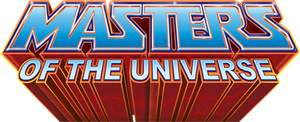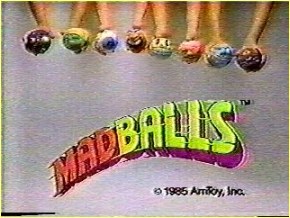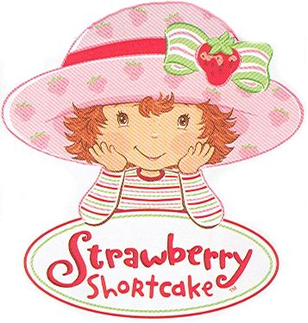Related Research Articles
Modern animation in the United States from the late 1980s to 2004 is frequently referred to as the renaissance age of American animation. During this period, many large American entertainment companies reformed and reinvigorated their animation departments, following the dark age, and the United States had an influence on global and worldwide animation.

Masters of the Universe is a sword and planet-themed media franchise created by Mattel. The main premise revolves around the conflict between He-Man and Skeletor on the planet Eternia, with a vast lineup of supporting characters in a hybrid setting of medieval sword and sorcery, and sci-fi technology. A follow-up series, She-Ra: Princess of Power revolves around He-Man's sister She-Ra and her rebellion against The Horde on the planet Etheria. Since its initial launch, the franchise has spawned a variety of products, including multiple lines of action figures, six animated television series, several comic series, video games, books and magazines, a daily newspaper comic strip, and two feature films.

Monchhichi is a line of Japanese stuffed monkey toys from the Sekiguchi Corporation, first released in 1974. They were licensed by Mattel in the United States until 1985, and later distributed worldwide directly by Sekiguchi. Five television series were produced based on the characters: The Japanese anime series Monchhichi Twins in 1980, produced by Tokyo 12 Channel, the American cartoon series Monchhichis in 1983, produced by Hanna-Barbera Productions, the French cartoon series Kiki, le Kiki de tous les Kiki in 2001, produced by Ben-J Productions, the Japanese stop-motion series Monchhichi in 2005, by Kids Station and the French CGI series Monchhichi Tribe in 2017, produced by Technicolor Animation Productions.

Teen Titans is an American animated superhero television series created by Glen Murakami and developed by Murakami, David Slack and Sam Register. Based on DC Comics's superhero team Teen Titans, it was produced by Warner Bros. Animation, and DC Comics. The show premiered on Cartoon Network on July 19, 2003; its first two seasons also aired on Kids' WB. Initially, only four seasons were planned, but the popularity of the series led to Cartoon Network ordering a fifth season. The final half-hour episode of the show, "Things Change", aired on January 16, 2006; it was later followed by a TV movie, Teen Titans: Trouble in Tokyo, that premiered on September 15 the same year, serving as the series finale. A 15-minute episode titled "The Lost Episode" was released as part of an online promotional campaign by Post Consumer Brands in January 2005.
My Pet Monster is a character that began as a plush doll first produced by American Greetings in 1986. It has horns, blue fur, a fanged smile, and wears breakaway orange plastic handcuffs.

Pound Puppies is a toy line that was created by Tonka in the 1980s. It later inspired an animated TV special, two animated TV series, and a feature film. Shipments of the toys over five years generated sales of $300 million in 35 countries. The brand generated more than $1 billion in retail sales by 2002.
McFarlane Toys is an American company founded by comic book creator Todd McFarlane which makes highly detailed model action figures of characters from films, comics, popular music, video games and various sporting genres. The company, a subsidiary of Todd McFarlane Productions, Inc., is headquartered in Tempe, Arizona.
GoBots is a line of transforming robot toys produced by Tonka from 1983 to 1987, similar to Hasbro's Transformers.
G.I. Joe: A Real American Hero is a military-themed line of action figures and toys in Hasbro's G.I. Joe franchise. The toyline lasted from 1982 to 1994, producing well over 500 figures and 250 vehicles and playsets. The line reappeared in 1997 and has continued in one form or another to the present day. It was supported by two animated series as well as a major comic series published by Marvel Comics.

Madballs is a series of toy foam balls originally created by AmToy, a subsidiary company of American Greetings in the mid-1980s, later being revived by Art Asylum (2007–2008) and Just Play, Inc. (2017–2019). The balls incorporated gross-out humor and each was given a character synopsis and an odd name. The toyline expanded into a franchise with a comic book series, two direct-to-video animated cartoons, and a video game for the ZX Spectrum, Amstrad CPC, and Commodore 64.

Batman action figures have been produced since the 1940s. These action figures, inspired by the character's appearance in comics and serials, were created by DC Comics and manufactured by various toy companies. These figures were made of various materials such as wood, tin, and plastic. They were typically between 6 and 8 inches in height and featured movable joints that allowed them to be posed in various positions.

Wild C.A.T.S is a half-hour animated television series based on the comics series of the same name and developed for television by David Wise. It aired on CBS for one season from October 1, 1994, to January 21, 1995. The series was produced by WildStorm Productions in association with Nelvana.
Spider-Man and Friends was a line of action figures and related merchandise featuring the comic book character Spider-Man and other characters appearing in Marvel Comics publications, released by Marvel Entertainment's toy division, Toy Biz, from 2003 to 2006. The line was aimed primarily at preschool-age children, and the character likenesses used were often altered to seem "cuter" and more childlike ; most characters were depicted as wide-eyed and smiling, even supervillains and characters better known for anger or savagery, such as the Incredible Hulk or Wolverine. Aside from being a toy line, there were also books, clothing, board games, cutlery, plates, bedding and video games.

Action figures based on the Teenage Mutant Ninja Turtles franchise have been produced by Playmates Toys since 1988. Staff artists at the Northampton, Massachusetts based Mirage Studios have provided conceptual designs for many of the figures, vehicles, and playsets and are credited on the packaging of the products they created.
Transformers: Generation 1 is a toy line from 1984 to 1990, produced by Hasbro and Takara Tomy. Based on the successful Transformers toy and entertainment franchise, the line of toy robots could change into an alternate form by moving parts into other places. It was the first line of toys produced for Transformers. The line was originally called The Transformers, with "Generation 1" originating as a term coined by fans of the toys when the Transformers: Generation 2 toy line was released in 1992. Hasbro eventually adopted the term "Generation 1" to refer to any toy produced in that era.
The Dick Tracy Show is an American animated television series based on Chester Gould's comic strip crime fighter. The series was produced from 1961 to 1962 by UPA.

Strawberry Shortcake is a cartoon character used in greeting cards published by American Greetings. Strawberry Shortcake's character was originally conceived as a mascot for a line of fruit-flavored candy before evolving into the modern character. The line was later expanded to include dolls, clothing, posters, and other products featuring the character, as well as an extended cast of friends and pets. In addition, the franchise has spawned television specials, animated television series and films. The franchise is currently owned by the Canadian children's television company WildBrain through the holding company Shortcake IP Holdings LLC.
G.I. Joe is an American media franchise and a line of action figures owned and produced by the toy company Hasbro. The initial product offering represented four of the branches of the U.S. armed forces with the Action Soldier, Action Sailor, Action Pilot, Action Marine and later on, the Action Nurse. The name is derived from the usage of "G.I. Joe" for the generic U.S. soldier, itself derived from the more general term "G.I.". The development of G.I. Joe led to the coining of the term "action figure". G.I. Joe's appeal to children has made it an American icon among toys.
The Puffalumps were stuffed animals created by Fisher-Price in 1986. They were lightweight stuffed animals made of parachute material and filled with poly-fil stuffing. Over the years, Fisher-Price released several different lines within the Puffalump brand, including the Puffalump Pets, Baby Puffalumps, Wild Puffalumps, Barnyard Puffalumps, Puffalump Kids, Jungle Juniors, and Care for Me Puffalumps. Special Puffalumps were occasionally released to commemorate holidays such as Easter, Christmas, and Valentine's Day.